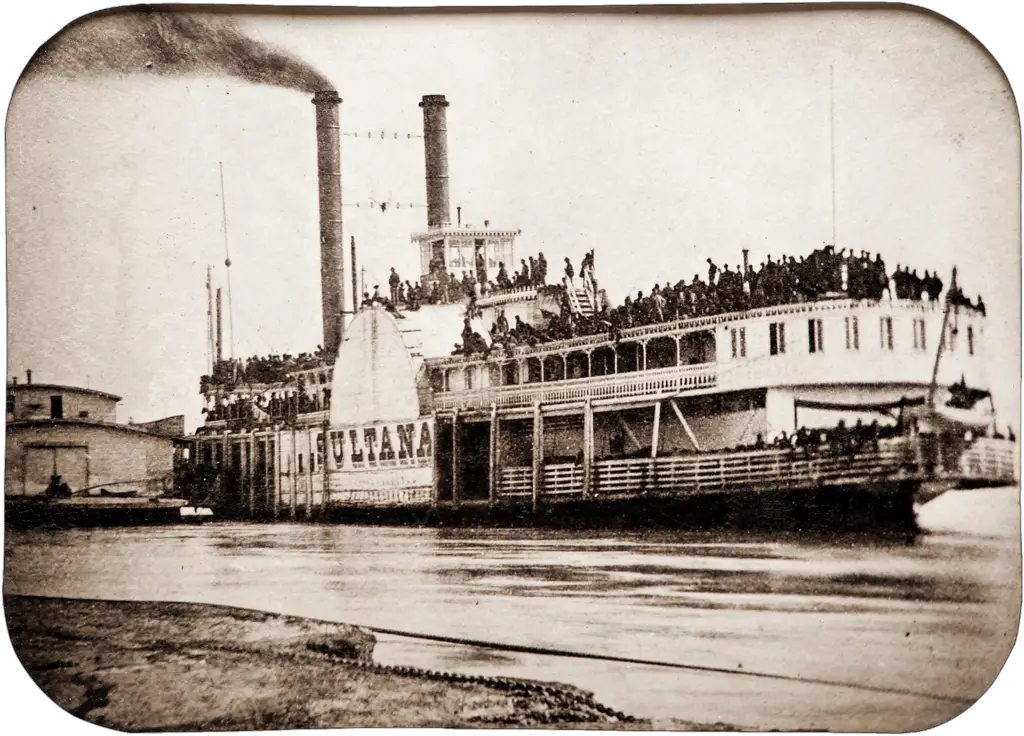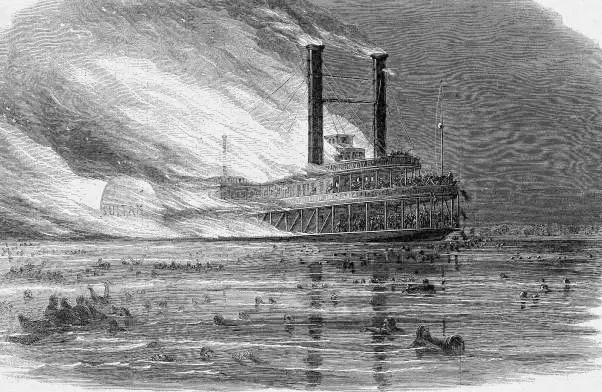On April 27, 1865, the greatest maritime disaster in United States history occurred when a steamboat called the Sultana exploded on the Mississippi River. It was an incident that wasn’t widely covered at the time because of what was going on, and it is still not widely known about today.
The steamboat, Sultana, had been built two years earlier in 1863 in Cincinnati and traveled between St. Louis and New Orleans carrying freight and passengers on the Mississippi River. The 260-foot-long wooden steamboat had been commissioned to carry troops during the Civil War along with carrying its regular passengers and cargo.
After Confederate General Robert E. Lee surrendered to Union General Ulysses S. Grant on April 9, 1865, Union prisoners of war began to be released from Confederate prisons. Thousands of Union soldiers awaited a way to return north, but they had no way to get there. The U.S. Government began to contract with steamboats on the Mississippi to move the soldiers and paid $5 per enlisted man and $10 for each officer.
The Sultana was on a return voyage from New Orleans when it docked in Vicksburg, Mississippi, on April 23, 1865. Vicksburg was a primary holding area for recently released Union prisoners of war. J. Cass Mason, the captain and one of three investors of the steamboat, had previously agreed to carry soldiers north through a deal he had made more than a week before with a Union lieutenant colonel named Ruben Hatch, an officer that had once been arrested for taking bribes to profit off the sale of military supplies. Hatch guaranteed Mason he would have a full load of passengers on his return voyage north.
But a problem had developed on the Sultana on its way back from New Orleans. One of the steamboat’s four boilers had developed a bulge and needed repairs. Instead of repairing the boiler with two new steel sheets, which would have taken more time, Mason opted to address the problem with a temporary patch on the boiler. He didn’t want another steamboat to take the passengers that were allotted to him.
After the temporary repair was made, more than 2,000 Union soldiers were placed on the Sultana by Union Army Captain George Williams, and the steamboat set off for ports north up the Mississippi. At the time, the steamboat was carrying about six times more passengers than it was designed to carry.
The Sultana fought greater than normal Mississippi River currents to get to Memphis, Tennessee. As the steamboat left Memphis in the early morning on April 27, 1865, disaster struck when three of the boilers exploded. The blast blew through the center of the boat and started a fire that ravaged the vessel. Many passengers on board were killed instantly after the explosion and those who weren’t tried to get to shore after being thrown into the cold water. Many of them later drowned.
Another vessel didn’t reach the Sultana to rescue the few people that survived until an hour later. It’s believed that more than 1,700 passengers died that day even though the military estimated the death toll at 1,238, and the Customs Department put the number at 1,547. It was difficult to know how many perished that day because the records of how many soldiers were initially put on the steamboat weren’t known.
The tragedy of the Sultana wasn’t covered in many newspapers, and the incident was not known by many people around the country after it happened. The reason was probably because the news at the time was dominated by the end of the Civil War and the hundreds of thousands of deaths because of it, and also because President Lincoln had been assassinated by John Wilkes Booth only about two weeks before the Sultana disaster. The Sultana disaster unfortunately became a footnote of history because of what else was going on in April of 1865.
Sources: National Geographic, NY Times, History Net, History.com, CivilWar.org, Toledo Blade



